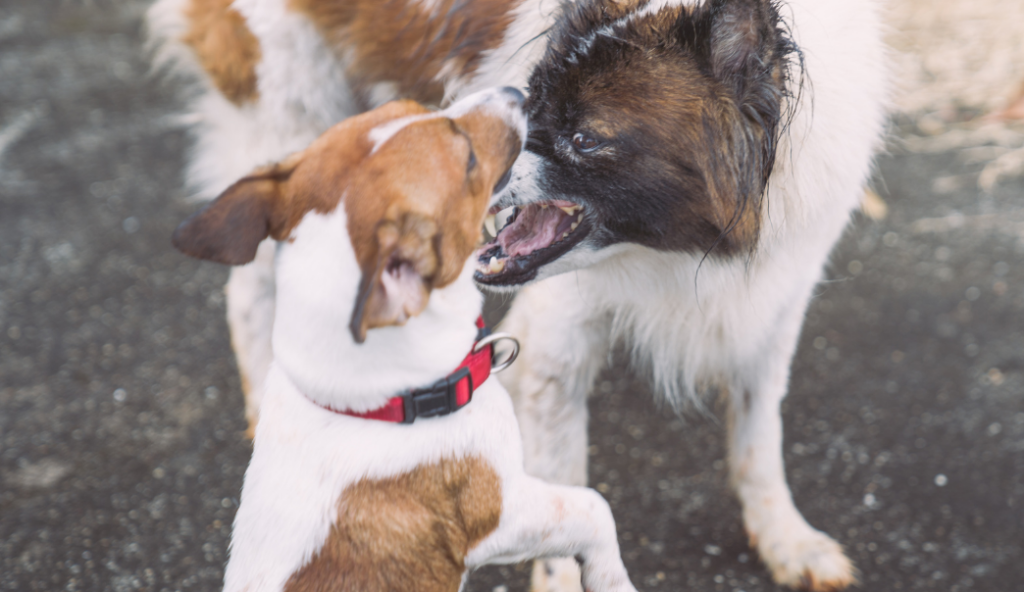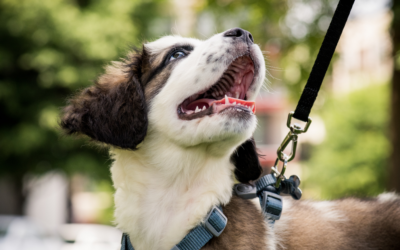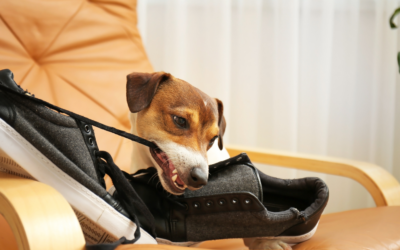Owning a dog is a rewarding experience, but it can become challenging when dealing with aggression issues. Aggressive behavior in dogs can arise from a variety of factors, including fear, territoriality, or even past experiences. Fortunately, the proper techniques and tips can address and manage aggressive behaviors effectively.
This article will explore the causes of aggression in dogs and provide proven training and behavior modification methods for addressing these issues. We will also discuss safety measures to consider during aggression training and when it may be necessary to consult a professional. Lastly, we will touch on long-term management strategies to ensure a peaceful coexistence between you and your furry friend.
Understanding the Causes of Aggression
Aggression in dogs can manifest in various forms, such as growling, barking, lunging, biting, and other signs. Understanding the underlying causes of aggressive behavior is crucial to address the issue effectively. One common cause of aggression is fear. A dog may become aggressive when it feels threatened or anxious. Identifying triggers that cause fear in your dog can help you manage and prevent aggression. There are many, many other causes of aggression, such as pain, around resources or territory, redirected aggression, and more.
Furthermore, previous experiences can contribute to aggressive behavior. Dogs who have had bad events in their lives, or endured abuse or neglect may display aggression as a defence mechanism. It's essential to have patience and empathy when dealing with a dog that has been through challenging experiences. Understanding the root causes of aggression can allow you to tailor your training methods accordingly.
Aggression Due to Fear
Fear-based aggression is one of the most common forms of aggression in dogs. It occurs when a dog perceives a threat and reacts aggressively to protect itself. Signs of fear may include quivering, trembling, or attempting to retreat. If pushed further or exposed repeatedly to fear-inducing stimuli, this can lead to aggression. To begin to address this type of aggression, creating a positive and safe environment for your dog is essential, as providing reassurance through calm and consistent training methods.
Additionally, socialization plays a crucial role in reducing the likelihood of fear-based aggression. Exposing your dog to various environments, people, and animals from a young age can help them build confidence and reduce their fear response. Positive reinforcement behavior modification and training techniques, such as rewarding calm behavior and gradually exposing your dog to their fears in a controlled manner, can also help with fear-based aggression.
Aggression Due to Possessiveness
Possessive aggression, or resource guarding, can manifest when a dog feels threatened or challenged over their resources, such as food, toys, or even their sleeping space. You can help your dog develop healthier ways to handle possessiveness without resorting to aggression through consistent training and positive reinforcement.
There are many different approaches and behavior modification techniques to help with this kind of behavior. Working on trading items of lesser value for those of higher value can often be helpful when dealing with resource guarding. By rewarding your dog for releasing objects, you can reinforce the idea that giving up the item results in something even better.
Furthermore, providing your dog with ample mental and physical stimulation can help reduce possessive tendencies. Engaging in interactive play sessions, puzzle toys, and obedience training can help redirect their focus and energy onto more appropriate outlets. Regular exercise and structured routines can also sometimes help, reducing the likelihood of possessive aggression.
Proven Training Methods for Aggressive Dogs
Training an aggressive dog requires patience, consistency, and positive reinforcement. It is crucial to establish clear boundaries and expectations while reinforcing desired behavior. One effective technique is reward-based training, using treats or praise to reward your dog for calm and non-aggressive behavior. This positive reinforcement will help your dog associate good behavior with rewards and encourage them to repeat it.
Another behavior modification method is desensitization and counterconditioning. This technique aims to change your dog's emotional response to triggers that typically provoke aggression. By gradually exposing your dog to these triggers in a controlled and positive environment, you can help them develop a more relaxed and non-aggressive response. This process may require professional guidance to ensure it is done correctly.
Reward-Based Training for Aggressive Dogs
Reward-based training is an effective and humane method for addressing aggressive behaviors in dogs. Rewarding your dog's good behavior reinforces their understanding of what is expected and increases the likelihood of them performing a behavior you'd like to see. When training an aggressive dog, being consistent with your rewards and praise is essential. Over time, this positive reinforcement will help reshape their behavior, replacing aggression with more appropriate responses.
During reward-based training, you must use high-value treats that your dog finds particularly enticing. This could be small pieces of cooked chicken, freeze-dried liver treats, or even their favorite toy. Using these special rewards creates a strong incentive for your dog to exhibit calm and non-aggressive behavior.
During this time, you also want to introduce management to prevent them from practicing any unwanted behavior. For example, for a dog that shows aggression towards other dogs, having the opportunity to bark at dogs through the window is often detrimental to an improvement in behavior.
Desensitization and CounterConditioning
Desensitization and counterconditioning involve gradually exposing your dog to the triggers that typically provoke aggression, while changing the association to something more positive. Start with a minimal intensity level of the trigger and provide high value treats to your dog. Slowly increase the intensity or proximity of the trigger while keeping your dog under threshold and not showing any signs of aggression or fear/anxiety. Over time, your dog will form new associations and learn to respond differently to previously triggering situations.
When implementing desensitization and counterconditioning, it is crucial to have a thorough understanding of your dog's triggers. This could be other dogs, strangers, loud noises, or specific environments. By identifying these triggers, you can create a systematic training plan that gradually exposes your dog to them in a controlled and positive manner.
It is important to note that these techniques may not be suitable for all aggressive dogs. In some cases, professional guidance from a certified dog trainer or behaviorist may be necessary to ensure the safety and effectiveness of the training process. These professionals can provide expert advice and guidance tailored to your dog's needs.
Remember, training an aggressive dog requires time, patience, and a commitment. With the proper techniques and guidance, you can help your dog overcome aggression.

Safety Measures During Aggression Training
When training an aggressive dog, it is essential to prioritize safety for both you and your pet. One crucial safety measure is using a leash and muzzle during training sessions or outings. These tools provide an additional layer of protection and prevent potential harm. Remember to choose a muzzle that allows your dog to pant and drink comfortably while restricting their ability to bite.
Creating a Safe Environment
Furthermore, it is essential to create a safe and controlled training environment. This means removing any potential triggers or distractions that may escalate your dog's aggression. For example, if your dog becomes reactive around other dogs, it is best to train in a quiet and secluded area where encounters with other dogs are minimized.
In addition to physical safety measures, it is equally important to consider your dog's emotional well-being during aggression training. Dogs with aggressive tendencies often experience fear and anxiety, which can contribute to their aggressive behavior. Therefore, creating a calm and supportive atmosphere during training sessions is crucial.
When working with an aggressive dog, seeking professional help from a qualified dog trainer or behaviorist is highly recommended. These professionals have the knowledge and experience to assess your dog's aggression and develop a customized training plan. They can also guide you on safely managing and handling your dog during training sessions.
Moreover, it is essential to understand that aggression issues cannot be resolved overnight. Addressing and modifying aggressive behaviors takes time, consistency, and patience. Celebrate the slightest signs of progress, and remember that setbacks are a normal part of the training process.
Additionally, avoid punishment-based training methods as they can exacerbate aggressive behaviors and damage the trust between you and your dog. Instead, focus on positive reinforcement and redirecting your dog's attention towards more appropriate behavior. Reward your dog for calm and non-aggressive responses, reinforcing that good behavior is rewarded.
Remember that every dog is unique, and what works for one may not work for another. Tailoring your training approach to your dog's needs and temperament is crucial. Be patient and understanding, as aggression issues take time to address, and progress may be gradual.
When to Consult a Professional
It is advisable to consult a certified behavior professional if your dog's aggression poses a significant risk to others or persists despite your efforts. A professional can provide guidance and develop a training plan tailored to your dog's needs. Seeking help early can help to speed up the process, as the more your dog practices these behaviors, the longer it can take to address.
Additionally, it is important to check with your veterinarian to make sure that there aren't any medical reasons for the aggression you're observing, and especially so if the onset is sudden. Many cases of aggression can be due to pain or other disease or illness that should be treated prior to working on the behavior.
Long-Term Management of Aggression
Managing aggression in dogs is an ongoing process that requires consistency and continued attention. Remember that every dog is unique, and what works for one may not work for another. Maintain a structured routine for your dog, providing plenty of exercise, mental stimulation, and activities you both enjoy.
Regularly reinforce appropriate behavior and continue training sessions to maintain and strengthen the positive changes in your dog's behavior. Ensure that other members of your household and visitors are also aware of the training methods and necessary precautions to prevent triggering aggressive responses.
Finally, consider seeking support from trusted sources of information or support groups. Connecting with others who have experienced similar challenges can provide valuable insights and encouragement along your journey to managing aggression in your dog.
Seeking Support for Aggressive Dog Behavior Training
Dealing with an aggressive dog can be emotionally draining, and you may encounter setbacks along the way. Having a behavior professional with whom you can discuss progress, challenges, and successes can be very helpful
Remember, with patience, consistency, and the right training techniques, aggressive behaviors in dogs can be effectively addressed. Understanding the causes of aggression, implementing proven training methods, and maintaining long-term management strategies will help you build a harmonious and loving relationship with your furry companion.



